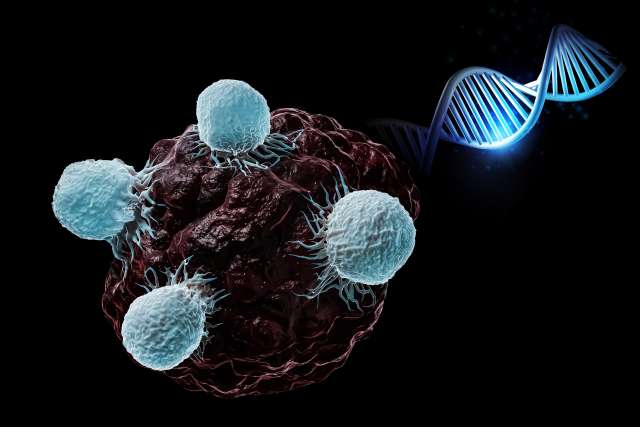What if a disease-fighting powerhouse was as close as your neighborhood grocery store, if not your kitchen?
Cruciferous vegetables – a group that includes kale, cauliflower, cabbage, broccoli, bok choy, Brussels sprouts, radishes, arugula and others – contain compounds that help reduce the risk of cancer, slow the growth of cancer after it’s been diagnosed and protect against heart disease, among other benefits.
“They have amazing benefits when it comes to their nutrition and phytonutrient content,” says Emma Veilleux, RDN, senior dietitian with the Simms/Mann UCLA Center for Integrative Oncology, which provides free psychosocial and nutrition support for people being treated for cancer at UCLA Health.
Also known as Brassica vegetables, cruciferous vegetables contain natural plant compounds called glucosinolates, which break down into sulfur-containing phytochemicals called isothiocyanates. One widely researched glucosinolate is sulforaphane, which has antioxidant and anti-inflammatory properties.
These plant chemical names may be a mouthful, but eating a mouthful (or more) of the foods that contain them delivers serious health benefits. A review study published in 2021 found that these plant compounds “are important components in the prevention and treatment of multiple chronic diseases,” including high blood pressure, high cholesterol and cancer.
Beyond fighting disease, cruciferous vegetables are high in fiber, vitamins and minerals.
‘In addition to just being super healthy vegetables for their nutrient content,” Veilleux says, “they have this additional benefit of these specific vital chemicals that are unique to cruciferous vegetables that are showing so much promise in terms of disease reduction.”
And these benefits come with just one or two servings of cruciferous vegetables a day, she says: “You don’t need to eat a gargantuan portion size in order to reap the benefits.”
Maximize disease-fighting power
Cruciferous vegetables confer benefits whether eaten raw or cooked, but there is a catch, Veilleux says.
“The unique thing about these (disease-fighting) phytochemicals is that there’s a little bit of chemistry that has to take place for the chemicals to be most bioactive – for our bodies to be able to utilize the nutrients,” she says.
An enzyme in cruciferous vegetables must be activated to turn the glucosinolates into isothiocyanates, and this happens by damaging the plant by chopping or chewing it. This enzyme is heat sensitive, so cooking the vegetable deactivates it.
The hack to being able to enjoy these veggies cooked while still reaping their benefit, Veilleux says, is to chop your veggies at least 40 minutes before cooking them, which allows time for the enzyme to activate before being exposed to heat. You can also eat cruciferous veggies raw. “That’s probably the best way to maximize the benefit,” she says. “But for most people, with the exception of having some shredded cabbage or radishes in a salad, eating them raw isn’t the most desirable way to eat most of these vegetables.”
Buying pre-chopped or frozen veggies is another great shortcut, she adds.
Pack a veggie punch
Veilleux considers cabbage an unsung vegetable hero: “It doesn’t get the attention it deserves for being such a healthy vegetable.
“It’s so cheap. It’s readily available. It lasts a long time,” she says. “If you buy a head of cabbage, you can have it rolling around in your fridge for a good month and it’s not going to go bad the way a bag of spinach would.”
Consider adding shredded cabbage to salads, stir-fries, soups and even scrambled eggs to boost your cruciferous vegetable intake, she suggests. It’s also a great taco topper.
When it comes to cooking cruciferous veggies, opt for steaming, roasting, sauteing or microwaving rather than boiling, Veilleux says. Boiling vegetables can leach nutrients into the water.
Try a quick steam, sauté in olive oil, or toss chopped veggies in olive oil and roast them in the oven. Microwaving frozen broccoli or cauliflower florets makes for a quick and healthy side dish.
Adjusting your diet
Some people complain that cruciferous vegetables make them gassy, Veilleux says – a normal side effect of the sulfur these plants contain.
“People tend to adjust the more consistently they eat these vegetables,” she says.
Start with small portions so you can see how your body responds, then increase your intake gradually, she says.
As long as you can tolerate them, it’s worth incorporating some – if not many – cruciferous vegetables into your regular diet, Veilleux says: “If you’re eating at least some of them consistently, you’re going to get the benefits.”





